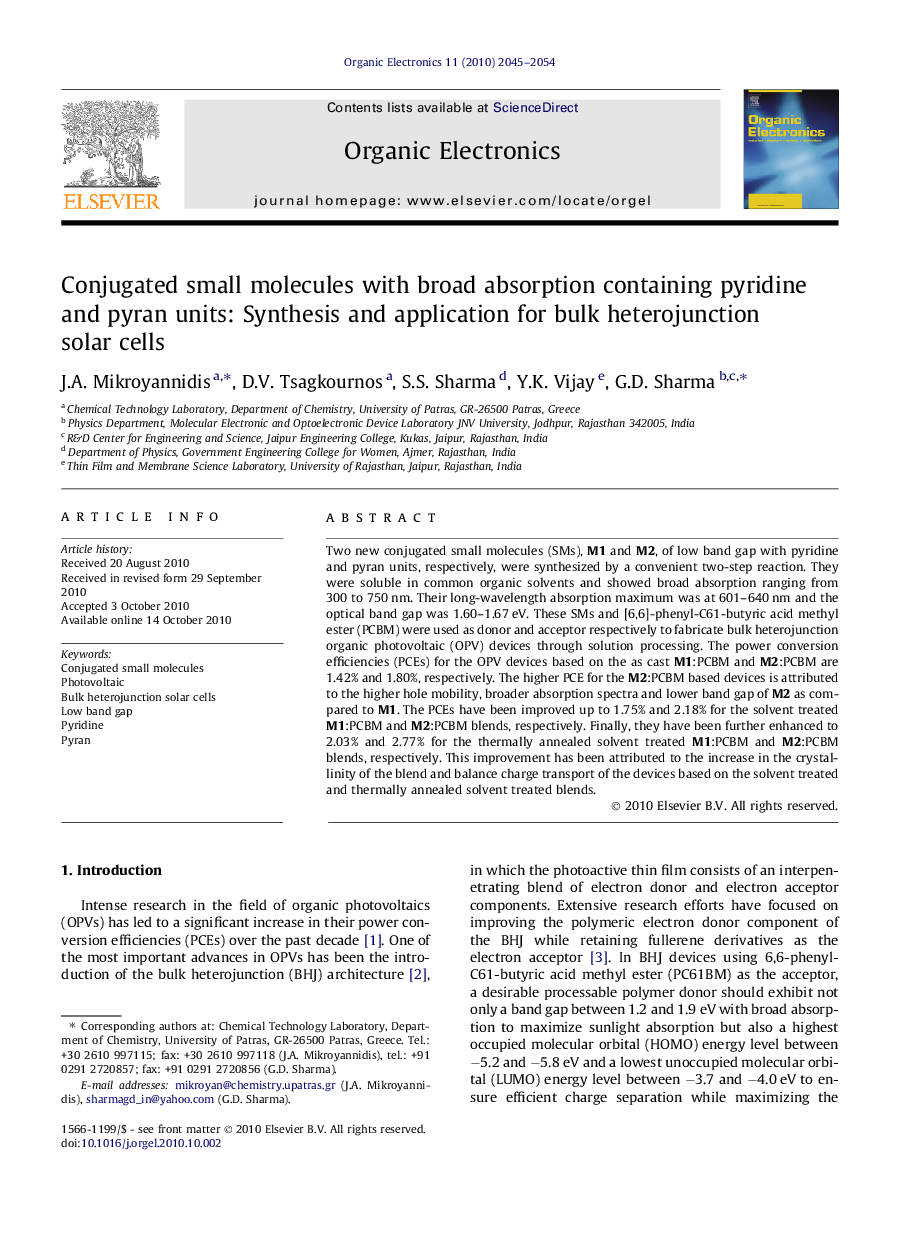| Article ID | Journal | Published Year | Pages | File Type |
|---|---|---|---|---|
| 1264810 | Organic Electronics | 2010 | 10 Pages |
Two new conjugated small molecules (SMs), M1 and M2, of low band gap with pyridine and pyran units, respectively, were synthesized by a convenient two-step reaction. They were soluble in common organic solvents and showed broad absorption ranging from 300 to 750 nm. Their long-wavelength absorption maximum was at 601–640 nm and the optical band gap was 1.60–1.67 eV. These SMs and [6,6]-phenyl-C61-butyric acid methyl ester (PCBM) were used as donor and acceptor respectively to fabricate bulk heterojunction organic photovoltaic (OPV) devices through solution processing. The power conversion efficiencies (PCEs) for the OPV devices based on the as cast M1:PCBM and M2:PCBM are 1.42% and 1.80%, respectively. The higher PCE for the M2:PCBM based devices is attributed to the higher hole mobility, broader absorption spectra and lower band gap of M2 as compared to M1. The PCEs have been improved up to 1.75% and 2.18% for the solvent treated M1:PCBM and M2:PCBM blends, respectively. Finally, they have been further enhanced to 2.03% and 2.77% for the thermally annealed solvent treated M1:PCBM and M2:PCBM blends, respectively. This improvement has been attributed to the increase in the crystallinity of the blend and balance charge transport of the devices based on the solvent treated and thermally annealed solvent treated blends.
Graphical abstractBulk heterojunction solar cells were fabricated using two small molecules of low band gap which were conveniently synthesized by a two-step reaction. The effect of solvent treatment and thermal annealing on the photovoltaic performance of the devices was investigated. Power conversion efficiency of about 2.77% was achieved.Figure optionsDownload full-size imageDownload as PowerPoint slideResearch highlights► Small conjugated molecules of low band gap. ► Synthesis of small conjugated molecules by a two-step reaction. ► Effect of solvent treatment and thermal annealing on the photovoltaic performance of the photovoltaic device. ► Power conversion efficiency of 2.77% for bulk heterojunction solar cells.
